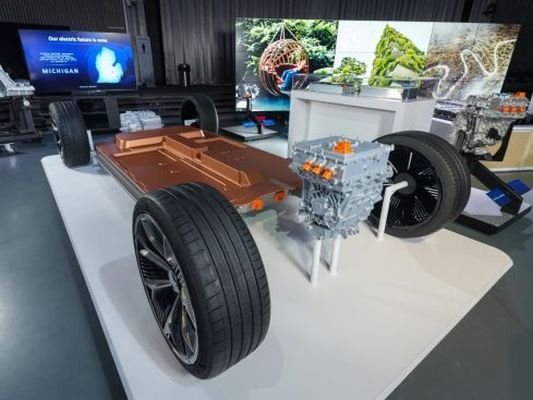General Motors (GM) presented the company’s flexible Ultium battery system thus laying out its multi-brand, multi-segment EV strategy — for getting to 1 million EV sales per year asap.
General Motors emphasized that its core battery strategy was about building a better cell, and then using it in a modular way for vehicles of every size and shape.
The crown jewel of the Ultium system is the battery cell itself. The new cell has 60% more energy capacity than what’s been used in the Bolt EV. The strategy is to move forward with the fewest number of the largest cells possible.
It’s the equivalent of more than 20 small cylindrical cans. There are about 20 layers in the cell. So each layer is the equivalent of about one small cylindrical can cell.
It’s really a smart move to take all of those layers, and put them inside a single pouch that’s a simple, low-cost, lightweight cell solution.
GM is also changing from a nickel-manganese-cobalt chemistry to an NCMA mix. The A stands for aluminum, the key to reducing the cobalt by 70%. While developed with LG Chem, its partner, the chemistry is proprietary for GM.
Ultium Batteries and Propulsion System Highlights
- GM’s new Ultium batteries are unique in the industry because the large-format, pouch-style cells can be stacked vertically or horizontally inside the battery pack. This allows engineers to optimize battery energy storage and layout for each vehicle design.
- Ultium energy options range from 50 to 200 kWh, which could enable a GM-estimated range up to 400 miles or more on a full charge with 0 to 60 mph acceleration as low as 3 seconds. Motors designed in-house will support front-wheel drive, rear-wheel drive, all-wheel drive and performance all-wheel drive applications.
- Ultium-powered EVs are designed for Level 2 and DC fast charging. Most will have 400-volt battery packs and up to 200 kW fast-charging capability while our truck platform will have 800-volt battery packs and 350 kW fast-charging capability.
GM’s flexible, modular approach to EV development will drive significant economies of scale and create new revenue opportunities.
Reference- GM Online Newsroom, Electrek, InsideEVs
